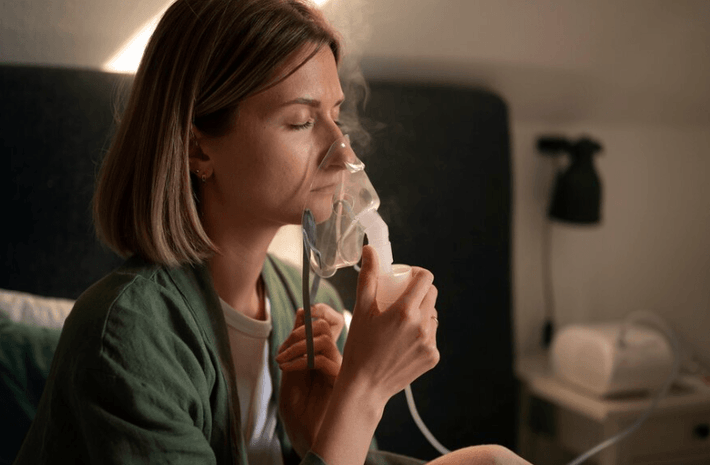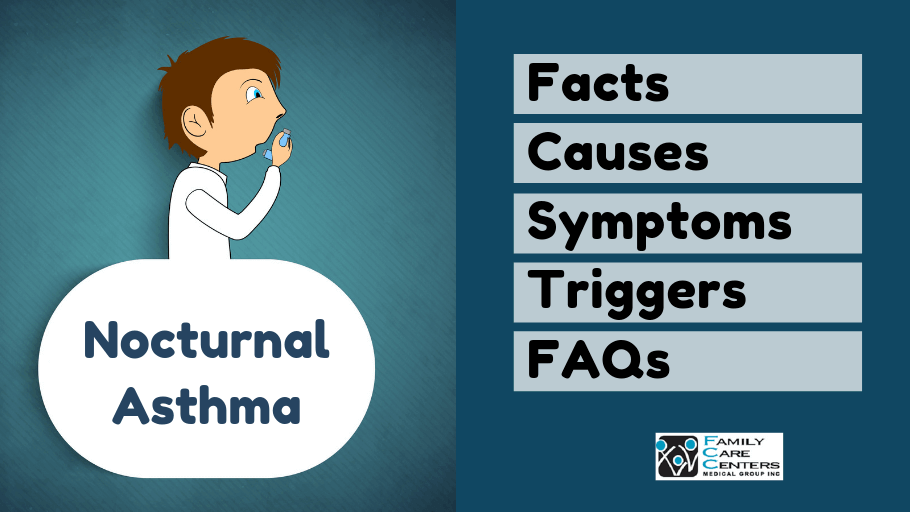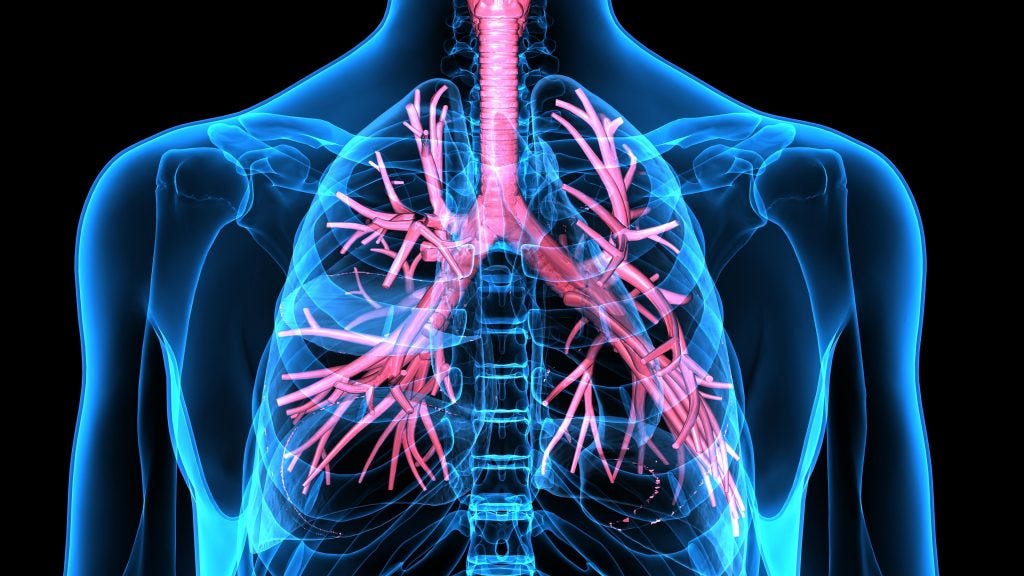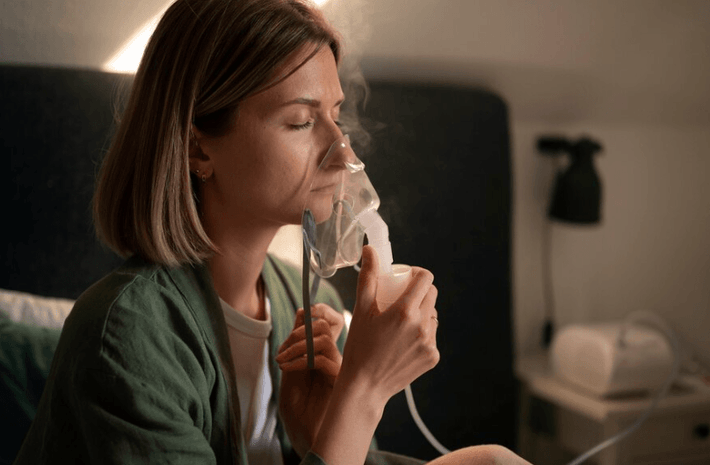
How to Distinguish and Manage Nocturnal Asthma and Sleep Apnea
How to distinguish and manage nocturnal asthma and sleep apnoea – How to distinguish and manage nocturnal asthma and sleep apnea? It’s a question that plagues many, especially those waking up gasping for air or constantly feeling exhausted. These two conditions, while distinct, often share overlapping symptoms, making diagnosis tricky. This post dives into the nitty-gritty, helping you understand the differences, identify the culprits, and find the right treatment path for a better night’s sleep (and life!).
We’ll explore the telltale signs, diagnostic tests, and effective management strategies for both, ensuring you’re equipped to navigate this complex health issue.
We’ll cover everything from recognizing the subtle nuances in breathing patterns to understanding the role of lifestyle changes and medical interventions. Think of this as your personal guide to conquering those nighttime breathing struggles, leading to more restful sleep and improved overall health. Get ready to unravel the mysteries of nocturnal asthma and sleep apnea!
Introduction
Navigating the complexities of nighttime breathing difficulties can be challenging, especially when differentiating between conditions like nocturnal asthma and sleep apnea. Both manifest during sleep, leading to disrupted rest and impacting daytime functioning, but their underlying causes and symptoms differ significantly. Understanding these differences is crucial for effective diagnosis and management.Nocturnal asthma and sleep apnea share some overlapping symptoms, leading to potential diagnostic confusion.
However, a closer look reveals distinct characteristics that allow for accurate identification. This will help clarify the unique features of each condition and explain how to approach effective management strategies.
Nocturnal Asthma Definition and Characteristics
Nocturnal asthma is a type of asthma where symptoms, such as wheezing, coughing, shortness of breath, and chest tightness, worsen at night or early morning. The exact reason for this nocturnal exacerbation isn’t fully understood, but it’s thought to be related to several factors, including circadian rhythms (the body’s natural internal clock), hormonal changes during sleep, and reduced airway diameter during sleep.
These nighttime symptoms can significantly disrupt sleep quality, leading to daytime fatigue and reduced productivity. Individuals experiencing nocturnal asthma often find that their symptoms improve after waking up and may require medication adjustments to manage nighttime exacerbations effectively.
Sleep Apnea Definition and Types
Sleep apnea is a sleep disorder characterized by pauses in breathing or shallow breaths during sleep. These pauses, called apneas, can last from a few seconds to minutes and occur repeatedly throughout the night. There are three main types:
- Obstructive Sleep Apnea (OSA): The most common type, where the airway becomes blocked during sleep, usually due to relaxation of the muscles in the throat. This blockage prevents air from reaching the lungs.
- Central Sleep Apnea (CSA): This type involves the brain failing to send the proper signals to the muscles that control breathing. As a result, the respiratory effort itself is reduced or absent.
- Mixed Sleep Apnea: A combination of both obstructive and central sleep apnea, where periods of airway blockage alternate with periods of reduced respiratory effort.
Sleep apnea significantly disrupts sleep architecture, leading to fragmented sleep and reduced sleep quality. This results in excessive daytime sleepiness, fatigue, and impaired cognitive function. In severe cases, sleep apnea can have serious health consequences, including an increased risk of cardiovascular disease.
Comparison of Nocturnal Asthma and Sleep Apnea Symptoms
While both conditions can cause disrupted sleep, their core symptoms differ. Nocturnal asthma is primarily characterized by respiratory symptoms such as wheezing, coughing, and shortness of breath, often accompanied by chest tightness. These symptoms are directly related to airway inflammation and narrowing. Sleep apnea, on the other hand, is defined by pauses in breathing, often accompanied by loud snoring, gasping, and choking sounds during sleep.
Figuring out if your nighttime breathing problems are asthma or sleep apnea can be tricky; monitoring symptoms like coughing and breathlessness is key. It’s a completely different ball game, though, when you consider the long-term health implications, like those highlighted in this article about karishma mehta gets her eggs frozen know risks associated with egg freezing , which reminds us that proactive health management is crucial at any age.
Getting a proper diagnosis for your breathing issues, whether asthma or sleep apnea, is the first step towards effective treatment and a better night’s sleep.
Daytime symptoms of sleep apnea typically involve excessive daytime sleepiness and fatigue, rather than respiratory symptoms. However, there can be some overlap; for example, individuals with severe sleep apnea may experience shortness of breath upon waking. The key distinction lies in the underlying cause of the breathing difficulties: airway inflammation and narrowing in asthma versus airway blockage or reduced respiratory effort in sleep apnea.
Symptom Comparison
Differentiating between nocturnal asthma and sleep apnea can be tricky, as some symptoms overlap. However, by carefully examining the nature and severity of symptoms, a clearer picture emerges. Paying close attention to breathing patterns during sleep is particularly crucial for accurate diagnosis.
Figuring out if you’ve got nocturnal asthma or sleep apnea can be tricky, needing a doctor’s help for proper diagnosis and management. Both conditions affect breathing during sleep, but understanding the differences is crucial, especially since sleep disturbances increase your risk for serious health issues. For example, poor sleep quality is linked to many of the risk factors that make stroke more dangerous , highlighting the importance of addressing breathing problems.
Getting the right treatment for your nocturnal asthma or sleep apnea is key to improving your overall health and reducing these risks.
| Symptom | Severity in Asthma | Severity in Sleep Apnea | Distinguishing Remarks |
|---|---|---|---|
| Wheezing | Often prominent, can be severe | Usually absent | Wheezing strongly suggests asthma. Its absence doesn’t rule out sleep apnea, but reduces its likelihood. |
| Coughing | Can be frequent, especially at night | May be present, but often less prominent than in asthma | While coughing can occur in sleep apnea, it’s typically less intense and less directly linked to airway constriction. |
| Shortness of Breath | Variable, can range from mild to severe, often worse at night | Can be present, particularly upon awakening | In asthma, shortness of breath is often accompanied by wheezing and a feeling of chest tightness. In sleep apnea, it’s more associated with interrupted sleep and gasping for air. |
| Chest Tightness | Common and significant symptom | Generally absent | A hallmark of asthma, indicating airway narrowing. |
| Daytime Sleepiness | Can be present due to poor sleep quality, but less severe than in sleep apnea | Often a significant and prominent symptom | Excessive daytime sleepiness is a key indicator of sleep apnea, reflecting the impact of disrupted sleep architecture. |
| Snoring | May be present, but usually not loud or disruptive | Often loud and disruptive, sometimes accompanied by pauses in breathing | Loud snoring, especially with pauses in breathing (apneas), is a strong indicator of sleep apnea. |
| Morning Headaches | Possible, but less common than in sleep apnea | Common due to oxygen deprivation during sleep | While headaches can occur with asthma, their presence in the morning, particularly coupled with other sleep apnea symptoms, suggests sleep apnea. |
Breathing Patterns During Nighttime Episodes
Nocturnal asthma is characterized by periods of wheezing and shortness of breath, often triggered by allergens or irritants. Breathing may become labored, with audible wheezes and prolonged exhalations. In contrast, sleep apnea involves repeated pauses in breathing (apneas) or shallow breaths (hypopneas) during sleep. These pauses can last from a few seconds to over a minute, leading to periods of oxygen deprivation and disrupted sleep.
Figuring out if your nighttime breathing problems are asthma or sleep apnea can be tricky – it often involves monitoring symptoms and using tools like pulse oximeters. It’s amazing to see advancements in other areas of medicine, like the news that the fda approves clinical trials for pig kidney transplants in humans , showcasing incredible progress in organ transplantation.
Understanding the differences between asthma and apnea is crucial for effective treatment, so consult a doctor for proper diagnosis and management.
The breathing pattern in sleep apnea often includes loud snoring followed by periods of silence, then gasps for air.
Co-occurrence of Nocturnal Asthma and Sleep Apnea
It’s possible for both nocturnal asthma and sleep apnea to occur simultaneously. Sleep apnea can worsen asthma by reducing oxygen levels in the blood, increasing airway inflammation, and triggering bronchospasm. Conversely, asthma can exacerbate sleep apnea by increasing airway resistance and narrowing the airway, making it more susceptible to collapse during sleep. For example, a person with both conditions might experience more frequent and severe asthma attacks at night, compounded by the added stress of sleep disruption and reduced oxygen levels caused by sleep apnea.
This highlights the importance of a comprehensive diagnosis and management plan that addresses both conditions.
Diagnostic Procedures
Differentiating between nocturnal asthma and sleep apnea requires a careful evaluation of symptoms and the use of specific diagnostic tools. While some symptoms overlap, the underlying mechanisms and appropriate treatments differ significantly. A thorough diagnostic process is crucial for effective management.
The diagnostic pathway involves a combination of patient history, physical examination, and specialized testing. The key is to systematically investigate the potential for both conditions, rather than assuming one diagnosis based solely on the presence of nighttime respiratory symptoms.
Diagnostic Flowchart for Nocturnal Asthma and Sleep Apnea
The following flowchart illustrates a systematic approach to diagnosing nocturnal asthma and sleep apnea. It emphasizes the iterative nature of the process, where initial findings may lead to further investigations.
Start: Patient presents with nighttime respiratory symptoms (cough, wheeze, shortness of breath, snoring, gasping).
Step 1: Detailed history and physical examination. Assess for asthma risk factors (allergies, family history), sleep apnea risk factors (obesity, large neck circumference), and symptom characteristics (timing, triggers).
Step 2: If asthma is suspected: Perform pulmonary function tests (PFTs) including spirometry, and consider peak expiratory flow (PEF) monitoring to assess diurnal variation. If sleep apnea is suspected: Proceed to polysomnography (sleep study).
Step 3: Interpret PFT results. Significant diurnal variation in FEV1 or PEF suggests nocturnal asthma. Polysomnography results will quantify sleep apnea severity (apnea-hypopnea index – AHI).
Step 4: If both conditions are suspected, further investigation may be needed, potentially including combined sleep study with respiratory monitoring.
Step 5: Diagnosis and treatment plan based on findings. Treatment may address both conditions concurrently.
Polysomnography (Sleep Study)
Polysomnography is the gold standard for diagnosing sleep apnea. This comprehensive sleep study involves monitoring various physiological parameters throughout the night, including brain waves (EEG), eye movements (EOG), muscle tone (EMG), heart rate, breathing effort, and oxygen saturation. The AHI (Apnea-Hypopnea Index), calculated from the number of apneas and hypopneas per hour of sleep, is the key metric for assessing sleep apnea severity.
A high AHI indicates a significant sleep apnea problem.
However, polysomnography has limitations in diagnosing asthma. While it can detect respiratory events associated with sleep apnea, it does not directly measure airway inflammation or bronchoconstriction, the hallmarks of asthma. Although decreased oxygen saturation during apneas might mimic some aspects of asthma, the underlying cause is different.
Pulmonary Function Tests (PFTs) and Peak Expiratory Flow (PEF) Monitoring
Pulmonary function tests, particularly spirometry, are crucial for assessing asthma severity. Spirometry measures lung volumes and airflow rates, providing key indicators of airway obstruction. A reduced FEV1 (forced expiratory volume in one second) and FEV1/FVC (forced vital capacity) ratio are indicative of airflow limitation characteristic of asthma.
Peak expiratory flow (PEF) monitoring involves measuring the patient’s maximum airflow rate using a peak flow meter. This is often performed at home, multiple times a day, to assess diurnal variation. A significant drop in PEF overnight suggests nocturnal asthma. For example, a patient with a daytime PEF of 400 L/min and a nighttime PEF of 250 L/min shows a significant nocturnal decrease, strongly suggesting nocturnal asthma.
In contrast, a patient with sleep apnea might show similar drops in oxygen saturation but not necessarily in PEF, unless there’s an underlying asthma component.
In summary, PFTs provide objective measures of lung function, helping to quantify asthma severity and its nocturnal variation. The absence of significant diurnal changes in PFTs would suggest that nocturnal symptoms are not primarily due to asthma.
Management Strategies

Source: fccmg.com
Successfully managing nocturnal asthma and sleep apnea requires a multifaceted approach combining medication, therapy, and lifestyle changes. The specific strategies will vary depending on the severity of each condition and the individual’s response to treatment. It’s crucial to work closely with your doctor to develop a personalized management plan.
Nocturnal Asthma Management: Medication
Effective management of nocturnal asthma often involves medication to reduce airway inflammation and bronchoconstriction. The choice of medication depends on the severity of the asthma and the patient’s response to treatment.
- Inhaled Corticosteroids (ICS): These are the cornerstone of asthma management, reducing inflammation in the airways. Examples include fluticasone, budesonide, and beclomethasone. Side effects can include oral thrush (fungal infection of the mouth) and, rarely, slowed growth in children. Proper inhaler technique is crucial to maximize effectiveness and minimize side effects.
- Long-Acting Beta-Agonists (LABAs): These medications relax the muscles around the airways, providing long-lasting bronchodilation. Examples include salmeterol and formoterol. LABAs are typically used in combination with ICS, not as monotherapy. Side effects are generally mild but can include tremor and increased heart rate.
- Leukotriene Modifiers: These medications block the action of leukotrienes, inflammatory chemicals that contribute to asthma symptoms. Examples include montelukast and zafirlukast. Side effects are generally mild but can include headache, nausea, and abdominal pain. These are often used as add-on therapy for patients whose symptoms are not adequately controlled with ICS/LABA.
- Methylxanthines (e.g., Theophylline): These medications relax airway muscles and can reduce inflammation. However, they have a narrow therapeutic index, requiring careful monitoring of blood levels to avoid side effects, which can include nausea, vomiting, insomnia, and heart palpitations.
Sleep Apnea Management: Treatment Options
Treatment for sleep apnea aims to improve airflow during sleep and prevent oxygen desaturation. Several options are available, each with its own advantages and disadvantages.
- Continuous Positive Airway Pressure (CPAP) Therapy: This is the most common and often most effective treatment for sleep apnea. A CPAP machine delivers a continuous flow of air pressure through a mask worn during sleep, keeping the airway open. While highly effective, CPAP therapy can be challenging for some patients due to mask discomfort, claustrophobia, or difficulty adapting to the airflow. Regular cleaning and maintenance of the equipment are also essential.
- Oral Appliances: These custom-made devices reposition the jaw and tongue to keep the airway open. They are a less invasive option than CPAP, but may not be suitable for all patients, and their effectiveness varies. Some patients experience discomfort or jaw pain with oral appliances.
- Surgery: Surgical options are considered for patients who don’t respond to CPAP or oral appliances, or for those with specific anatomical issues contributing to their sleep apnea. Surgical procedures can involve removing excess tissue in the throat (uvulopalatopharyngoplasty – UPPP) or repositioning the jaw. Surgery carries inherent risks and requires a careful evaluation to determine suitability.
Lifestyle Modifications for Both Conditions
Lifestyle changes play a crucial role in managing both nocturnal asthma and sleep apnea. These modifications can significantly improve symptom control and reduce the need for medication or more intensive therapies.
Weight Management: Obesity is a major risk factor for both conditions. Weight loss, even modest amounts, can significantly improve symptoms. A balanced diet, regular exercise, and mindful eating habits are key components of a successful weight loss plan. For example, a person with a BMI of 35 who loses 10% of their body weight may experience a substantial reduction in both sleep apnea severity and asthma symptoms.
Diet: A healthy diet rich in fruits, vegetables, and whole grains can reduce inflammation and improve overall health. Reducing consumption of processed foods, sugary drinks, and excessive alcohol can benefit both conditions. For instance, a diet high in antioxidants has been shown to reduce inflammation, which is beneficial for asthma.
Exercise: Regular physical activity improves lung function and cardiovascular health, benefiting both asthma and sleep apnea. However, it’s important to listen to your body and avoid strenuous activity that triggers asthma symptoms. A regular moderate exercise routine, such as 30 minutes of brisk walking most days of the week, can significantly improve overall health and reduce the severity of both conditions.
Case Studies: How To Distinguish And Manage Nocturnal Asthma And Sleep Apnoea
Understanding the complexities of nocturnal asthma and sleep apnea often requires examining real-world scenarios. The following case studies illustrate the diagnostic challenges and management strategies involved in differentiating and treating these overlapping conditions.
Case Study 1: Overlapping Nocturnal Asthma and Sleep Apnea
A 55-year-old male patient presented with complaints of chronic nighttime cough, shortness of breath, and excessive daytime sleepiness. He reported waking up frequently during the night feeling breathless, often needing to sit up to catch his breath. His wife also noted periods of loud snoring and witnessed apneic episodes (pauses in breathing) during his sleep. Initial spirometry revealed mild obstructive airway disease, but this was not consistently reproducible.
A polysomnography (sleep study) revealed an apnea-hypopnea index (AHI) of 35 events per hour, confirming moderate obstructive sleep apnea (OSA). Further investigation with nocturnal oximetry showed significant desaturations during sleep, consistent with both OSA and potential nocturnal asthma exacerbations. His treatment plan involved continuous positive airway pressure (CPAP) therapy for OSA and the introduction of inhaled corticosteroids and a long-acting beta-agonist for asthma control.
Regular follow-up appointments were scheduled to monitor his response to treatment and adjust medications as needed. After three months, his daytime sleepiness and nighttime awakenings had significantly improved, and his AHI had reduced to 10 events per hour. His asthma symptoms also showed marked improvement with consistent use of his prescribed inhalers.
Case Study 2: Primarily Nocturnal Asthma
A 30-year-old female patient presented with recurrent nocturnal wheezing and coughing, primarily occurring between 2 am and 4 am. She denied excessive daytime sleepiness and her partner reported no significant snoring. Initial spirometry showed normal lung function during the day. However, a suspicion of nocturnal asthma was raised due to the consistent pattern of her symptoms. She underwent a nocturnal oximetry test which showed periodic dips in oxygen saturation during sleep, suggesting episodes of bronchospasm, although not significant enough to definitively rule out sleep-disordered breathing.
The patient was started on low-dose inhaled corticosteroids and a short-acting beta-agonist as needed for nighttime symptoms. Her symptoms improved significantly, supporting the diagnosis of nocturnal asthma. Further sleep studies were deemed unnecessary given the clinical response to asthma treatment and the absence of other sleep-related symptoms.
Comparative Table of Case Studies, How to distinguish and manage nocturnal asthma and sleep apnoea
| Feature | Case Study 1: Overlapping Conditions | Case Study 2: Primarily Nocturnal Asthma |
|---|---|---|
| Presenting Symptoms | Nighttime cough, shortness of breath, excessive daytime sleepiness, snoring, witnessed apneas | Nocturnal wheezing and coughing (2-4 am), no daytime sleepiness, no snoring reported |
| Diagnostic Procedures | Spirometry, polysomnography, nocturnal oximetry | Spirometry, nocturnal oximetry |
| Diagnosis | Moderate OSA and nocturnal asthma | Nocturnal asthma |
| Treatment | CPAP therapy, inhaled corticosteroids, long-acting beta-agonist | Inhaled corticosteroids, short-acting beta-agonist (as needed) |
Potential Complications and Long-Term Effects

Source: cpapsupplies.com
Untreated nocturnal asthma and sleep apnea can lead to significant and sometimes irreversible health consequences. Understanding the potential long-term effects of each condition, and how they might interact, is crucial for effective management and improved patient outcomes. Ignoring these conditions can have a profound impact on quality of life and longevity.
Long-Term Effects of Untreated Nocturnal Asthma
Untreated nocturnal asthma significantly impacts lung function over time. Chronic inflammation and airway narrowing, frequently experienced during nighttime exacerbations, lead to a progressive decline in lung capacity. This can manifest as increasing breathlessness, even at rest, reduced exercise tolerance, and a greater susceptibility to respiratory infections. The persistent inflammation also contributes to the remodeling of the airways, making them permanently narrower and less responsive to treatment.
Beyond respiratory issues, untreated nocturnal asthma can negatively affect overall health, potentially leading to increased cardiovascular strain, sleep disruption, and reduced overall quality of life. For example, a person might experience chronic fatigue due to poor sleep and decreased oxygen saturation, impacting their ability to work and engage in daily activities.
Long-Term Effects of Untreated Sleep Apnea
Untreated sleep apnea poses serious risks to long-term health. The repeated episodes of interrupted breathing throughout the night deprive the body of oxygen, leading to a cascade of negative effects. Cardiovascular problems are a major concern, with increased risk of hypertension, heart failure, stroke, and irregular heartbeats. The chronic stress on the cardiovascular system from oxygen deprivation and sleep fragmentation significantly increases the risk of mortality.
Furthermore, sleep apnea is strongly linked to cognitive impairment, including difficulties with memory, concentration, and decision-making. The chronic sleep deprivation associated with apnea can lead to mood disturbances, increased risk of accidents due to daytime sleepiness, and decreased productivity. A real-world example is the case of a truck driver diagnosed with severe sleep apnea; untreated, his condition led to a major accident due to excessive daytime sleepiness.
Comparison of Long-Term Risks and Potential Interactions
Both untreated nocturnal asthma and sleep apnea share some overlapping long-term risks, primarily related to chronic inflammation and cardiovascular strain. However, they also have distinct consequences. While asthma primarily affects the respiratory system, leading to progressive lung damage, sleep apnea’s impact is more widespread, affecting the cardiovascular system, cognitive function, and overall well-being. Importantly, these conditions can interact and exacerbate each other.
For instance, sleep apnea can worsen asthma symptoms by reducing oxygen levels and increasing inflammation, leading to more frequent and severe nocturnal asthma attacks. Conversely, severe asthma exacerbations can worsen sleep apnea by increasing airway resistance and further compromising breathing during sleep. This vicious cycle highlights the importance of comprehensive diagnosis and management of both conditions. A patient with both conditions might experience a significantly reduced quality of life, with daytime fatigue and reduced cognitive function compounding the respiratory difficulties.
Last Word

Source: welzo.com
Navigating the world of nocturnal asthma and sleep apnea can feel overwhelming, but armed with the right knowledge, you can take control. Remember, distinguishing between these conditions is crucial for effective treatment. By paying close attention to your symptoms, working closely with your doctor, and utilizing the diagnostic tools available, you can find the relief you deserve. Don’t let these conditions steal your sleep – take charge and reclaim those precious nighttime hours!
FAQ Insights
What’s the difference between obstructive and central sleep apnea?
Obstructive sleep apnea (OSA) involves a blockage of the airway during sleep, leading to pauses in breathing. Central sleep apnea (CSA) involves the brain failing to send signals to the muscles that control breathing.
Can I manage both asthma and sleep apnea with lifestyle changes alone?
Lifestyle changes like weight loss, avoiding alcohol before bed, and regular exercise can help manage both conditions, but often medical intervention is also necessary.
Are there any long-term risks associated with undiagnosed nocturnal asthma?
Untreated nocturnal asthma can lead to reduced lung function, increased risk of respiratory infections, and even heart problems over time.
How long does a sleep study typically last?
A sleep study, or polysomnography, usually takes place overnight in a sleep center and involves monitoring your brain waves, heart rate, breathing, and oxygen levels.
